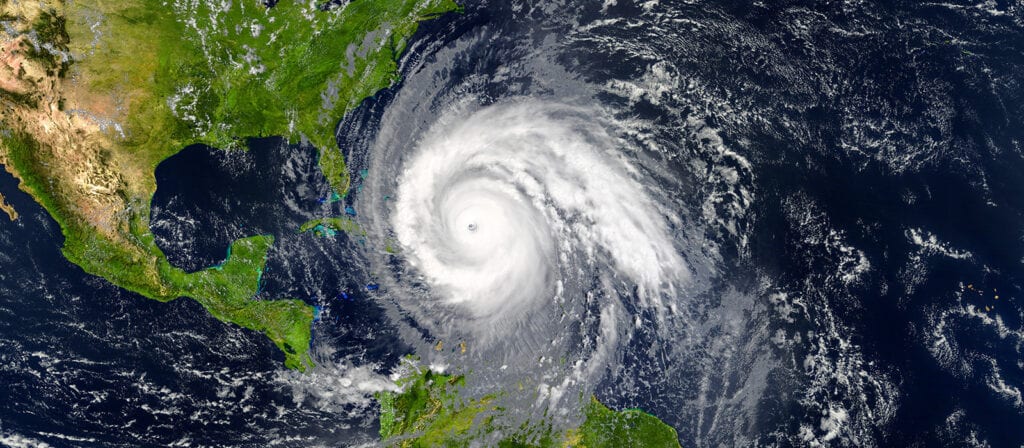In this guest blog, Dr Tina Thomson, Head of Catastrophe Analytics EMEA W/S at Willis Towers Watson, sets out how the re/insurance sector already has the tools to help businesses identify, quantify and manage climate risk, and how they can be extended to climate resilience transition. Our thanks to Dr Thomson and Willis Towers Watson for their permission to share this article with ICMIF members.
This summer has brought about several climate extremes across the globe. From record-breaking temperatures in Canada to devastating floods in China and Europe, deadly extreme weather is ensuring that the climate predictions climate scientists have long warned about – and reinforced again by the latest IPCC report recently published – can no longer be ignored, particularly by the insurance community.
Even though climate change is the greatest challenge to managing risk the industry has encountered in its long history, Willis Towers Watson’s rich heritage rooted in analytics and science enables us to price risk from a position of deep expertise. Developed over decades, the tools we use to quantify financial losses from natural catastrophe perils can be extended, with the input of the latest climate science from our partners at the Willis Research Network, to help businesses manage climate risk.
Incorporating financial modelling with natural catastrophe modelling using the latest climate science enables us to value climate risk across the economy. Additionally, our analytics solutions enable a forward-looking view of risk that benefits an organisation’s strategy and pricing of risk when dealing with uncertainty. These insurance-related techniques are now being adopted in other parts of the finance sector to evaluate climate risk and were among the issues explored at Willis Towers Watson’s inaugural Climate Risk and Financial Stewardship Summit in May.
Time horizons & climate uncertainty
Only if we act in the present, can we secure future business and the first challenge in the re/insurance sector is to address the uncertainty of climate change.
The insurance industry has typically looked at one- to two-year cycles but climate change happens over a decades-long time horizon, with the physical effects of a warmer world expected to materialise more prominently in the second half of the century. Climate projections are uncertain, and even our current understanding of today’s climate makes it challenging to attribute single acute events to climate change. Due to these dynamics, climate models and historical data will not reflect the full cost of climate risk. For example, catastrophe models that are largely based on historical data are not always fully reliable and may end up hiding the true extent of the risk for both the insurers and the insured. Risk pricing allows insurers to set a premium that reflects the likelihood that the insured will make a claim and the probable size of that claim. With increased volatility from climate change, accounting for this risk ahead of time, combined with implementing resilience measures such as the build back better initiative in the UK, for example, helps to manage and prevent economic losses in the future.
Quantifying the impact of perils can be done using existing tools and risk-reflective pricing approaches such as those used for underwriting and stress-testing. It is important for insurers to ensure that underwriting strategies can evolve with potential changes in the peril and to capture secondary perils in areas where they are becoming more frequent with increased losses. Stress testing is a valuable tool for regulators to ascertain whether insurers are financially flexible enough to absorb losses that could occur in various adverse real-world scenarios. At Willis Re, we have long supported clients with solutions to conduct stress testing around natural catastrophe perils to assess capital adequacy and solvency requirements for the regulators. This is key to understanding possible outcomes to then optimise risk management under uncertainty and to adequately prepare for future losses. Therefore, allowing for sensitivity testing to address the climatic uncertainty that arises from the impact of climate change scenarios on different perils is a natural next step for the industry, as pioneered by the Prudential Regulation Authority.
Using science to inform risk modelling
Insurers can no longer avoid or delay addressing the impact of a changing climate in their underwriting, pricing, and investment decisions. To understand their risk exposure to climate change, insurers can use an array of analytical techniques to sensitivity test how various acute (event-driven) and chronic (longer-term) risks are likely to affect them over time. Combining detailed climate data with an analysis of the macroeconomic implications of climate change is necessary to inform risk appetite and portfolio investment strategies.
Incorporating the latest science and new understandings into a firm’s view of risk is essential because it informs on the magnitude and extent of risks experienced by individuals and organisations, and about the causes of those risks – a critical factor in setting priorities and choosing cost-effective mitigation strategies.
With increasing demands to mitigate the effects of climate change, enhancing resilience, and transitioning to a lower carbon economy, early consideration of physical risk is essential as it can help protect individuals, small businesses and entire countries from permanent damage caused by the impact of extreme weather events. However, climate change is a highly complex issue and presents a significant challenge due to the level of uncertainty around the nature and scale of these risks. Therefore, integrating the latest climate science into the broader risk management framework requires an organisation to understand and act upon the potential impacts, for example, from promoting ecological forestry for wildfire resilience to assessing a model’s completeness with respect to ‘storms of the future’ to measure its potential exposures to climate change.
Opportunities and challenges
Climate change exacerbates uncertainty and thus our ability to prepare for the future confidently requires even more action today. Although the insurance sector is taking meaningful action on climate change, the window for effective response is limited. But there are immediate actions those within and outside the re/insurance industry can take:
- Balance affordability and availability of insurance by strengthening assessment of climate-related risks while taking long-term actions to mitigate and alleviate such exposures.
- Take a holistic approach towards managing climate risk by integrating climate risks into business decisions throughout strategy, governance, risk management and monitoring against key metrics and targets, as advocated by the Taskforce for Climate Related Disclosures (TCFD).
- Business models need to be reshaped and climate-risk considerations need to be incorporated at micro- and macro-level to successfully move to a net-zero economy.
- Develop new products, not just in the developing world, to bridge the protection gap, as the difference between insured losses and economic losses still remains relatively unknown until an event occurs.
- Build greater resilience and risk mitigation decisions by considering secondary perils and the impact of climate change on low-probability catastrophic events.
- Assess climate risk by using advanced forward-looking analytics and incorporating the latest climate science into decision-making beyond the annual re/insurance cycle.
- Take an enterprise-wide perspective, looking at both the asset and liability sides of the balance sheet with collaboration across stakeholders for governments, regulators, and consumers to promote climate change adaptation.
At Willis Towers Watson, we are well positioned in the market to support managing climate risk holistically because we combine our expertise in re/insurance, investments and climate resilience with the latest climate science into our clients’ decision-making. However, we recognise that there is still much to be done not just in the financial sector but as a society to take the necessary steps to improve our preparedness and de-escalate the potential impact of climate change over time.
Dr Tina Thomson leads the delivery of catastrophe analytics services for global and local insurers for Willis Re across the West and South region of Europe, Middle East, and Africa (EMEA W/S). Tina sits on the management boards for EMEA W/S and Willis Re International catastrophe analytics and coordinates the Willis Research Network’s activity for Willis Re International.
Willis Re, one of ICMIF’s Supporting Members is the reinsurance business of Willis Towers Watson, the global advisory, broking and solutions company. To learn more about Willis Re or to make contact with our main contact people for ICMIF members please click here.






